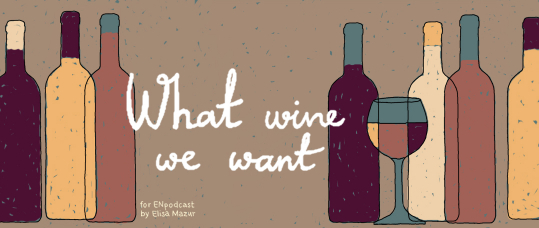What wine we want
In this episode we will try to answer the question – What:
What can we actually want, what are the alternatives, and just how many wines are available to someone who wants a bottle for dinner?
A rough estimate by a wine professional will probably state that there are up to twenty thousand types of wine. Common sense, however, dictates that there are just these three: red, white and pink (or rose). Well, the truth lies somewhere in the middle.
Parameter 1: Color. Wine exists in 3 major colors: red, white and pink. Interestingly, white wine (which is actually yellow or gold or pale green) is often made of black grapes, the same ones used to make red wines. The difference is that the skins are taken out immediately as soon as the grapes are crushed. It is the skins that give wine its color, because of the pigment they carry. But in some cooler regions purple skins don't usually mature well, and provide harsh acid taste. So purple skins are removed and wine is made of yellow pulp alone, left naked.
Parameter 2. Taste.
The taste of wine depends on the amount of sugar that the grapes contain. We distinguish between dry, medium dry (semi-dry), medium-sweet (semi-sweet) and sweet. In its turn the amount of sugar is defined by the amount of sunny days and general weather conditions in the region of growth. The sunnier the region is, the more sugary the grapes become. Thus, the lightest wines will most probably come from Germany and the sweetest from Portugal and Spain.
Parameter 3: Body. The body of wine is mainly defined by the content of alcohol, as well as some other components and chemicals, such as tannic acid. Any wine can be roughly identified as light and delicate or fuller-bodied.
Here we can rely on 5 major categories: light and delicate white wine, fuller bodied white, rose, light red dry wine and fuller bodied red. These types of wine are usually table wines, served with food.
We set aside Champagne and sparkling wines, which are used as appetizers or party drinks. These types are usually delicate, low in alcohol and can vary in taste.
Sweet dessert wines, Portuguese Port and Spanish Sherry, are served at the end of a meal as a digestive. They usually have higher alcohol content and a very distinctive full body.
In our next episodes we will find out, where on Earth you can find a good bottle of wine to suit your taste and occasion! We will talk about geography!
















